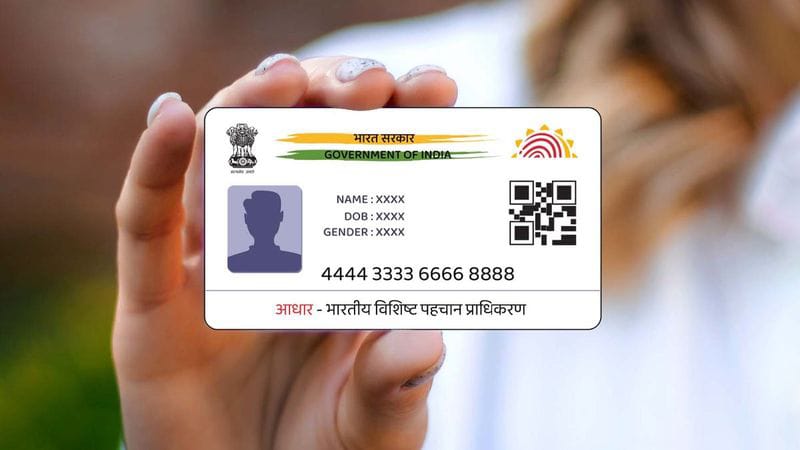Aadhaar: India’s Digital Identity Revolution – Unlocking a Billion Possibilities
In the heart of the world’s largest democracy, a technological marvel has emerged, transforming the lives of over a billion people. Welcome to the world of Aadhaar, India’s groundbreaking national identification system that has become a global benchmark for digital identity initiatives.
The Genesis of Aadhaar
A Vision for Inclusive Identity
The story of Aadhaar begins in the early 2000s when India faced a monumental challenge: providing reliable identification to its vast and diverse population. Millions of Indians, particularly those in rural areas and underprivileged communities, lacked official documentation, hindering their access to essential services and government benefits.
In 2009, the Indian government embarked on an ambitious journey to create a unique identification system for every resident. This initiative, spearheaded by tech visionary Nandan Nilekani, aimed to provide a robust, digital identity that would be:
- Unique to each individual
- Easily verifiable and authenticated
- Difficult to duplicate or forge
Thus, the Unique Identification Authority of India (UIDAI) was born, tasked with implementing what would become the world’s largest biometric ID system.
The Aadhaar Enrollment Process
Bringing Identity to the Masses
The enrollment process for Aadhaar is designed to be inclusive and accessible:
- Enrollment Centers: Thousands of centers were set up across India, including mobile units to reach remote areas.
- Documentation: While supporting documents are encouraged, they are not mandatory, allowing even those without existing ID to enroll.
- Biometric Capture: State-of-the-art devices capture fingerprints, iris scans, and photographs.
- Data Transmission: Encrypted data is sent to UIDAI’s central database for de-duplication and Aadhaar number generation.
- Aadhaar Letter: The unique 12-digit number is mailed to the enrollee in a secure letter.
Aadhaar Card Download and PVC Card
After enrollment, residents can easily access their Aadhaar information:
- Aadhaar Card Download: UIDAI provides a secure online portal for Aadhaar card download, allowing residents to obtain their digital Aadhaar card anytime, anywhere.
- Aadhaar PVC Card: For those preferring a physical copy, UIDAI offers an Aadhaar PVC card – a durable, wallet-sized card containing the Aadhaar details.
Keeping Aadhaar Up-to-Date
Update Aadhaar
UIDAI recognizes the importance of maintaining accurate and current information:
- Residents can update Aadhaar details like name, date of birth, address, phone number, and email through online and offline channels.
- Biometric update is available for children and adults whose biometrics may have changed over time.
- The “Update Aadhaar” service ensures that the identification system remains relevant and useful throughout an individual’s lifetime.
The Technology Behind Aadhaar
A Digital Fortress
Aadhaar’s technological infrastructure is a marvel in itself:
- Scalable Architecture: Designed to handle over a billion identities and millions of authentications daily.
- Robust Security: Multi-layered encryption and security protocols protect sensitive data.
- De-duplication Engine: Advanced algorithms ensure each Aadhaar number is truly unique.
- Authentication Ecosystem: Allows real-time verification of identity through various modes (biometric, OTP, demographic).
Aadhaar in Action: Use Cases and Impact
Transforming Service Delivery
Aadhaar has become the backbone of numerous government and private sector services:
- Direct Benefit Transfer (DBT): Subsidies and welfare payments are directly credited to beneficiaries’ bank accounts, reducing leakage and corruption.
- Financial Inclusion: Aadhaar-based KYC (Know Your Customer) has simplified bank account opening, bringing millions into the formal banking system.
- Public Distribution System (PDS): Aadhaar-linked ration cards have streamlined food distribution and reduced fraud.
- Healthcare: Aadhaar is being used to create electronic health records and track immunizations.
- Taxation: Integration with the Income Tax Department has improved tax compliance and simplified filing.
- Telecom: Aadhaar-based SIM card activation has enhanced security in mobile communications.
- Digital Signatures: Aadhaar-based e-Sign allows for paperless, digital signing of documents.
Economic Impact
The implementation of Aadhaar has had significant economic implications:
- Estimated savings of over $12 billion through reduced leakage in subsidy disbursements
- Increased financial inclusion, with over 300 million new bank accounts opened
- Streamlined processes leading to improved ease of doing business
Challenges and Controversies
Navigating the Complexities
Despite its successes, Aadhaar has faced its share of challenges and criticisms:
- Privacy Concerns: Critics argue that Aadhaar creates a surveillance infrastructure that could be misused.
- Data Security: Instances of data breaches have raised questions about the system’s security.
- Exclusion Issues: Cases of biometric authentication failures have led to denial of services for some individuals.
- Mandatory vs. Voluntary: Debates over making Aadhaar mandatory for various services have reached the Supreme Court.
- Mission Creep: Concerns about Aadhaar’s expanding scope beyond its original purpose of providing identity.
Legal Framework and Safeguards
Balancing Identity and Privacy
The Aadhaar Act of 2016 provides the legal backbone for the system:
- Defines the scope and usage of Aadhaar
- Establishes penalties for misuse of data
- Creates mechanisms for grievance redressal
Additionally, the Supreme Court’s landmark judgment in 2018:
- Upheld the constitutional validity of Aadhaar
- Restricted its mandatory use to government subsidies and tax filings
- Strengthened data protection measures
Global Impact and Future Prospects
A Model for the World
Aadhaar has garnered international attention:
- World Bank’s “Digital ID for Development” initiative draws inspiration from Aadhaar
- Countries like Philippines and Morocco are studying the Aadhaar model for their own identity projects
The Road Ahead
As Aadhaar continues to evolve, several developments are on the horizon:
- Enhanced Data Protection: Implementation of more robust privacy safeguards
- Expansion of Services: Integration with more government and private sector applications
- Technological Advancements: Exploration of blockchain and AI to further enhance security and efficiency
- International Collaboration: Potential for cross-border identity verification systems




